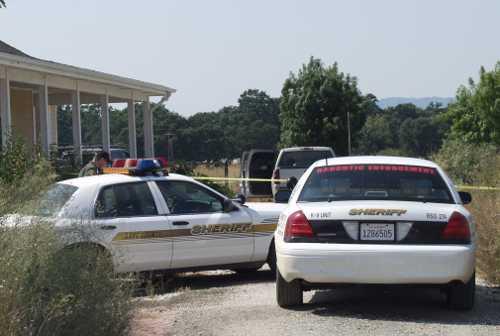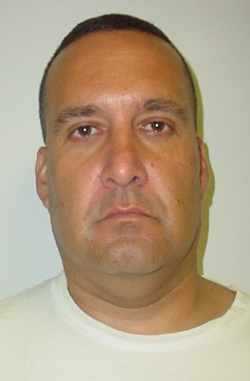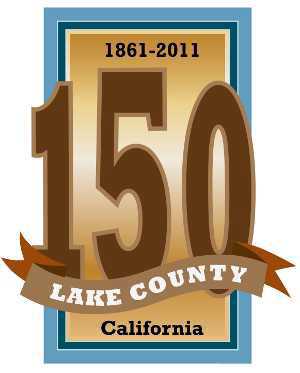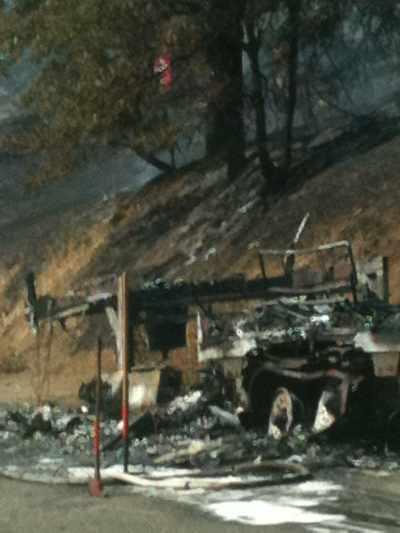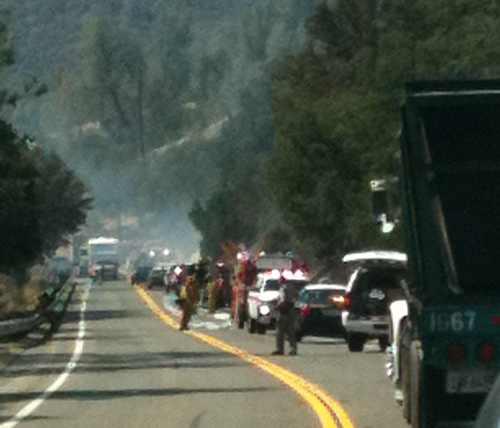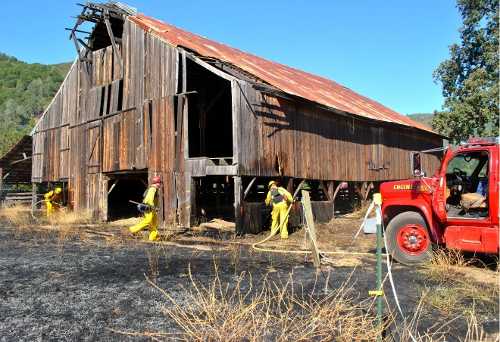
A worker stands at Ground Zero in New York City on October 3, 2001. Photo courtesy of the George W. Bush Library.
LAKE COUNTY, Calif. – Ten years later, the memories of the events of Tuesday, Sept. 11, 2001, are finding voice in commemorations, retrospectives and memorials around the United States, as both the victims of that day and the heroes are honored.
Terrorists crashed planes into the World Trade Center and the Pentagon, and crashed a fourth plane in Shanksville, Penn., when the passengers rushed the cockpit of the plane, which was headed to another target in Washington, DC.
An estimated 3,000 people died in the attacks, which touched off a ripple effect of terror, anger and grief that spread across the country, touching people in every state.
In a Saturday address, President Barack Obama noted, “Ten years ago, ordinary Americans showed us the true meaning of courage when they rushed up those stairwells, into those flames, into that cockpit.”
Since then, the country's leaders have ratcheted up the strength of the country's intelligence agencies and its military.
President Obama said the United States has “taken the fight to al Qaeda like never before,” eliminating senior al Qaeda leaders, including Osama bin Laden, killed earlier this year.
Five years ago, Congressman Mike Thompson, who represents Lake County in the US House of Representatives, joined the House Permanent Select Committee on Intelligence.
“These terrorists are here to stay,” said Congressman Mike Thompson. “Our lives have been changed forever.”
In looking back, Thompson said it's important to remember the 3,000 victims and their families. “We also give our deep thanks to the brave members of our armed forces, first responders and members of the intelligence community who each day perform their sworn duty to keep us safe and to recognize the sacrifices they and their families have made.”
The major impacts on life in Lake County have included the many young men and women going off to service in the military, and the loss of Lance Corporal Ivan Wilson and Sgt. David Hartman during their service overseas.
In the wake of the attacks, there have been other, more subtle impacts. In the area of law enforcement, Sept. 11's legacy has led to greater preparedness, awareness and even connectedness.
“It's become clear that we need to be part of the bigger picture and think nationally and globally,” Lakeport Police Chief Brad Rasmussen said of small local agencies like his.
Rasmussen pointed out that everyone needs to be on the lookout at all times.
His own staff has more training requirements in the area of homeland security and terrorism, recognition and preparedness. A staffer recently was sent to training regarding protecting local infrastructure.
The city of Lakeport also is in the process training city management staff and council members in emergency preparedness, which includes responding to terrorism incidents, said Rasmussen.
In addition, the Lakeport Police Department has a terror liaison officer to keep the rest of the staff up to date on terrorism activities in the country, he said.
“Terrorism has been around forever,” said Rasmussen, but the events of Sept. 11, 2001, made it clear that local law enforcement has an important role in keeping their communities – and the country – safe.
Called to action
Here on the West Coast, thousands of miles away from the attacks, men and women watched the events of Sept. 11 unfold, and some of them would be called to action to respond and lend a hand in ravaged New York city.
Among those who would travel from California to New York were Lake County residents Pat Brown of Clearlake Oaks, who today is the deputy chief of the Northshore Fire Protection District, and Pam Plank of Kelseyville, the Red Cross' Lake County disaster chair.
Pat Brown worked as a firefighter in Santa Clara County for 25 years, rising to the rank of captain before his retirement. He had worked for what was to become Northshore Fire Protection District before getting the job in Santa Clara, and continued to work locally as a battalion chief when not in Silicon Valley.
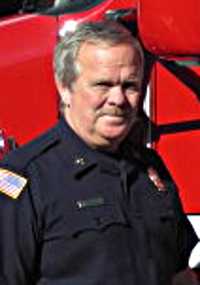
Northshore Fire Deputy Chief Pat Brown took part in the recovery effort in New York City in the weeks following the attack on September 11, 2011. File photo.
The route that took him to Ground Zero, the ravaged site of the destroyed World Trade Center, actually began two years before he was chosen to join a rescue team that spent two and a half weeks in New York immediately following Sept. 11.
It was two years earlier that he took part in a Urban Search and Rescue deployment in Montgomery, Maryland.
The Maryland training lasted two weeks, and there he met the Fire Department of New York's US&R team, whose members he worked with and got to know. Brown said it was FDNY's Chief Ray Downey who started the US&R concept.
On Sept. 12, 2001, Brown got the call to come to New York. For the next two and a half weeks he and his 78-member team would work at Ground Zero.
Engineers, rescue specialists – of which Brown was one – search dogs and a doctor were part of the team, flying in to New York with 78,000 pounds of equipment because they needed to be self-sufficient during their stay, he said.
Brown was a member of US&R California Task Force Three, one of eight such teams in California and 28 nationwide, he said. “I think almost all the teams rotated through there,” he said of Ground Zero.
Brown said he and his team members soon noticed that New York's firefighters didn't have the equipment that their California counterparts did. He also remembered swapping items with a Seattle team member to get items he didn't have.
They worked hand-in-hand with FDNY, not just in recovery but also in answering regular calls, as FDNY's ranks had been devastated by Sept. 11, losing approximately 343 members.
Among the dead were all but one of the members of the US&R team Brown had worked with two years earlier, including Chief Downey, who at age 63 was last seen in the Marriott Hotel lobby on Sept. 11, directing rescue efforts. A Web site devoted to a scholarship fund in his memory, www.chiefraydowney.com, said Downey's body was never found.
Brown worked on the day shift, with most of his work done “out in the pile” that was the South Tower, the second of the towers to be hit by a plane. It collapsed at 9:59 a.m. Sept. 11, after the North Tower fell.
For two weeks they would search the rubble for survivors. They never found any, Brown said.
Brown spent the first week on the site going underground, rappelling into elevator shafts or going up through the subway to look for survivors. Using a gas-powered circular saw, they would cut through elevator doors.
“We found people but we never removed any,” he said, explaining that FDNY and the New York Police Department were in charge of removal.
In most of the areas they worked, they had to cut through huge beams and use a crane to pull them off before they could move on with recovery, he said.
Brown said the night crew on his team worked a lot in Building 7, a high security government building near the World Trade Center that also collapsed, although it wasn't hit by a plane. He said Building 7 was more intact that the other buildings.
Brown's team used listening devices and search dogs as they looked for victims. Most of the team's dogs were trained to find live people, and only two were trained as cadaver dogs.
The cadaver dogs were constantly getting hits on bodies, in part because body parts were throughout the rubble, Brown said.
Down in the subway areas, he called the work of the dogs “amazing,” with the dogs and their handlers quickly helping clear areas in search of survivors or bodies. “And then we saw rats as big as our dogs,” he added.
The signs of fatigue began to show within the two and a half weeks at Ground Zero. Brown said all of the US&R teams were staying at the Javits Convention Center. With people constantly coming and going, and forklifts and other equipment moving through the building, “Sleep was really hard.”
Brown said he remembered being angry on his seventh day on the site when, just after finally getting to sleep, he was awakened and told to put on his uniform. The reason? President George W. Bush was paying a visit to the convention center.
An exhausted Brown got up and got dressed, and watched as President Bush arrived. “He was just walking through,” he said.
During his stay, Brown said U.S. Senators Barbara Boxer and Dianne Feinstein would pay a visit and speak to his team. One night when he sat down to eat, actress Loretta Swit of “MASH” fame served him his dinner.
Brown said that what stands out in his experience in New York was the friends he made there, and their generosity.
When his team got ready to leave, he said his FDNY counterparts gave him the chief's shirt and radio.
“I still have it,” he said of the shirt.
He said his team members prided themselves on the fact that none of them later became sick. They believe that's because they diligently wore their breathing filters.
However, their canine team members weren't so lucky. Within three years of the recovery effort, “every dog that was in our team died,” Brown said.
A major contributing factor, he said, was believed to be the silicon dust the animals breathed as they worked the site.
Offering help and compassion
Pam Plank had been with the Red Cross for five years before she found herself heading to New York.
Following a retirement hastened by a medical condition, Plank said, “I knew that I had something to give other than just sitting at home,” and went in search of a way to serve. The Red Cross welcomed her.
She began working as a volunteer in the nonprofit's local office, then started taking classes, and quickly discovered she had an affinity for disaster-related work and helping people, which was put to work during local flooding in 1998.
While she had taken classes, Plank said she I realized that you can learn everything in a book but you're not smart. “That is where my life started to turn.”
She went into Disaster Services Human Resources, where she directly helped connect people with the services they needed. When she went to New York – she arrived on Sept. 14, 2001 – she went as a family services supervisor.
Plank was there for three weeks. “That was the only length of time they would allow anyone because of the mass destruction,” she said.
She was about three miles from Ground Zero, where she could still see smoke billowing up from the site of the collapsed buildings.
She has no pictures of her time there. “We were not allowed to take pictures at all,” she said, noting that they also were not allowed at the disaster site.
Her first two weeks were spent doing basic outreach to help locate those in need. Plank and her team – which also included people equipped to offer mental and physical health assistance – traveled to the city's affected areas and went door to door, asking people if they needed assistance.
She estimated she saw 30 clients a day. “You had to wait for them to go through their tears,” she said.
Families would suddenly find themselves in danger of losing their homes because the breadwinner had died, she said.
Red Cross also worked to connect with New York groups that could assist with helping people, she said.
Eventually the Red Cross was located on a pier in New York next to the Intrepid museum complex. There, they worked alongside many other agencies, including the FBI and CIA.
“The one memory that really sticks out is that everyone came together,” she said.
Plank said she remembered that one day a man of Middle Eastern descent came into the center and sat at the back. She said she saw the anger others displayed toward him because of the Arab hijackers who had run the planes into the towers.
“Something told me to just go and say hello to the man,” she said.
Plank said she shook his hand, a gesture which she said surprised him. He asked why she was willing to touch his hand. She jokingly asked if he forgot to wash it.
He said people wouldn't look at him because of their anger. “That has got to change” she said to him. “You didn't do it.”
She made a point of saying, loudly, that everyone there was seeking help, and it didn't matter where they came from, a remark that seemed to loosen people up. “I guess maybe I did make a difference.”
In another case, a woman came to the center asking for assistance. In her apartment she had heard a loud crash in the living room area, but was able to get out without going into that room. The woman kept saying how scared she was.
Plank and some of her team returned to the woman's apartment with her. A mental health worker went into the front room while Plank took the woman into another part of the apartment to pack clothes and other items.
In the front room was found the body of an airplane passenger, strapped into the seat, where it had crashed through the apartment's plate glass front window, Plank said.
She said that, to this day, she tears up when Sept. 11 is mentioned. Plank said the new monument is beautiful, noting that she finds water to be healing.
Last week, she sent her husband off to Albany, New York, where he is going to work with the Red Cross to help victims of Hurricane Irene.
Plank said she told him to go to Manhattan if he gets the chance, and asked him to take pictures of the site. “I need that for closure,” she said.
Plank said she becomes upset when people allege that Sept. 11 was staged. “It's nothing that I really want to see again, but it has happened.”

Congressman Mike Thompson, a member of the House Permanent Select Committee on Intelligence, says terrorists are here to stay, and the work of the intelligence community and the military is more important now than ever. File photo.
Looking back
Thompson told Lake County News in an interview late last week that many of the changes that resulted from Sept. 11 are very evident – airline screenings, the increased emphasis on awareness and public safety, and more metal detectors in public places.
He said the intelligence community and the military are working harder than ever to keep the country safe.
Now a senior intelligence committee member, Thompson attends three to four meetings and briefings a week on sensitive matters relating to the United States' safety, and travels around the world on committee business five to six times a year.
Most of that intelligence committee's work is done in closed session, he said, and he can't talk much about his service on the committee or the trips he takes.
He said he finds his work with the intelligence committee both rewarding and “very tough emotionally,” noting that a recent briefing had to deal with the deaths of numerous Navy SEALs in a crash in Afghanistan in August.
Thompson said after Sept. 11, he saw the country coming together, and the different political parties working together.
“That was very, very short-lived,” he said, asking that it also was exploited by some.
Now the country is showing incredible divisiveness, Thompson said.
There also was incredible goodwill from around the world. “We squandered a lot of that goodwill,” he said.
“We need to remember the tragedy and remember that there are people who want to harm us,” Thompson said.
In looking back, Plank – who has been to Missouri, North Carolina and San Diego on Red Cross support missions since then – said that her experiences in New York made her a better person. “I have more compassion for the people of other races now.”
On a community basis, Plank said she believes that there has been an increased emphasis on preparedness since Sept. 11 for all communities.
More recently, she's undergone treatment for renal cancer and lost a kidney, but she's on the mend.
She's not been back to New York since 2001. “If I have have a chance to go back there, I probably will,” she said.
As for Brown, he said his visit to New York changed his whole career. From there he was promoted and began higher levels of training.
He believes the main reason why so many firefighters and police officers died on Sept. 11 was related to a communication breakdown. “It always goes back to that.”
He said he also doesn't think a lot of people really understand the brotherhood of firefighters, who put their lives on the line every day.
“I think people have really forgotten that in this 10 years,” he said.
E-mail Elizabeth Larson at This email address is being protected from spambots. You need JavaScript enabled to view it.. Follow Lake County News on Twitter at http://twitter.com/LakeCoNews, on Tumblr at www.lakeconews.tumblr.com, on Facebook at http://www.facebook.com/pages/Lake-County-News/143156775604?ref=mf and on YouTube at http://www.youtube.com/user/LakeCoNews.

